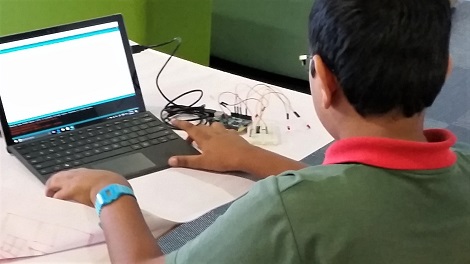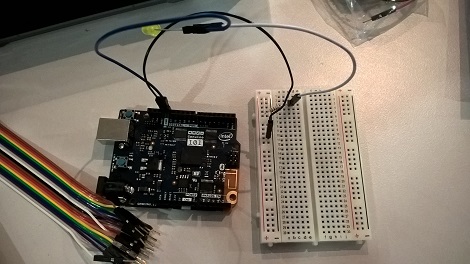What is an Arduino?
An Arduino is a Micro-controller or mini computer that is programmed with the Arduino programming language. Students can program these physical machines to work with sensors (such as light or temperature sensors) and actuators (such as motors, lights and buzzers) to create solutions to real world problems. A simple way to look at an Arduino is a circuit board with "smarts".
Why would I use Arduino Micro-controllers. in the Classroom?
Working with Arduinos requires students to draw on multiple skills. When programming, students will develop their computational thinking skills. When designing and connecting the physical components of the board students will need to develop scientific knowledge of electricity and circuits. Because the projects and products students can develop are almost limitless, Arduinos can add value to almost any curriculum area, but due to the combination of both coding and circuitry knowledge, their application would best suit students in stages 3 and up.
Curriculum Connections
In addition to coding, computational thinking and working with electricity outcomes, the flexible nature of Arduinos means they can have application across the curriculum. Create a smart farm in Agriculture or Science, construct an interactive stage or stop motion set in English or Drama, add a smart or computerised component to projects in Design and Technology.
There are many resources available to help you get started with Arduino Micro-controllers. One of the best local sites is the Innovation Toolbox created by Intel. Internationally, take a look at Sparkfun and investigate their Arduino experiment guide for many ideas and tutorials.
Tips & Tricks in the ET4L (Typical School) environment
You will require a device running either Mac OSX or Windows to program and connect with an Arduino. However your students can use any device with an internet browser (including tablet devices) to write and tinker with their Arduino code using 'Create', Arduino's online coding environment. There are some tips and tricks to loading the Arduino programming environment in the NSW eT4L environment. An eT4L installation guide will be coming soon!
Device Compatibility:
You will require Mac OSX or Windows to program your Arduino.

